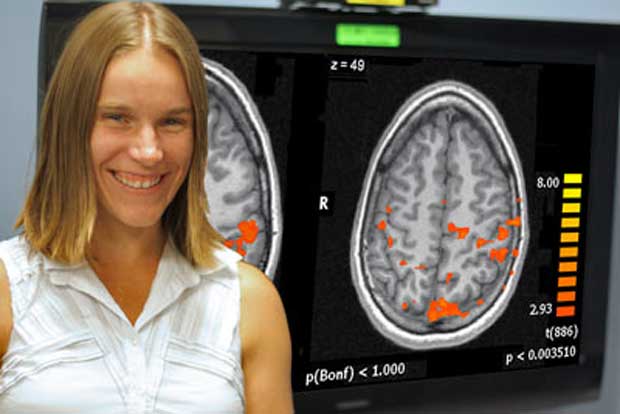
Health at Google and T.E.D. Talks
David Agus (born January 29, 1965) is an American physician and a co-founder of Navigenics, a personal genetic testing company, and Oncology.com, the largest online cancer resource and virtual community and Applied Proteomics. He is a Professor of Medicine and Engineering at the University of Southern California.
See as well David Agus From Wikipedia, the free encyclopedia and See David Agus From YouTube.
Eric J. Topol, M.D. is an American cardiologist, geneticist, and researcher. Much of Topol's career was spent at the Cleveland Clinic, where he served as chairman of cardiovascular medicine and founded the Cleveland Clinic Lerner College of Medicine. Topol was one of the first researchers to question the cardiovascular safety of rofecoxib (Vioxx), culminating in the drug's ultimate withdrawal from the market. Topol's advocacy on the subject led to what the New York Times described as an "unusually public dispute" with the Cleveland Clinic's leadership over ties between the academic institution and the pharmaceutical industry, ultimately leading to Topol's departure from the Clinic after his academic position was abolished. Topol currently serves as Director of the Scripps Translational Science Institute in La Jolla, California.
See as well Eric Topol From Wikipedia, the free encyclopedia and See Eric Topol From YouTube.
Dr. David Agus with Connie Chung - 4 Things You Can Do Right Now To Prolong Your Life
(SSTattler: This lecture only a synopsis but it is good = 10 minutes).Dr. David Agus talks Connie Chung on four things you can do to prolong your life -- take baby aspirin, a statin (like Lipitor), get your flu shot and wear better shoes.
92YU unites the best minds from universities and organizations all over the world and welcomes them to 92Y! Lecturers from the Ivy League and beyond take on the most extraordinary ideas, people and creations of our time.
Every session includes not just a lecture, but a chance for each class to share ideas and perspectives. Join us this fall to enjoy the best of the university experience ... without the exams!
See all 92YU Events. http://www.92y.org/92YU
Dr. David Agus - The End of Illness
(SSTattler: This a long lecture at Health at Google but worth it. It takes about 1 hour).Can we live robustly until our last breath? Do we have to suffer from debilitating conditions and sickness? How can we add years to our lives? New York Times best-selling author and doctor, Agus will present a tour of the human body, ultimately showing us how a new perspective on our individual health will allow each of us to achieve a long, healthy life.
David Agus: A New Strategy in the War Against Cancer
http://www.ted.com Traditionally, David Agus explains, cancer treatments have had a short-sighted focus on the offending individual cells. He suggests a new, cross-disciplinary approach, using atypical drugs, computer modeling and protein analysis to treat and analyze the whole body.Eric Topol - The Creative Destruction of Medicine: How the Digital Revolution Will Create Better Health Care
Dr. Eric Topol visits Google to talk about his book: The Creative Destruction of Medicine: How the Digital Revolution Will Create Better Health Care"Until very recently, if you were to ask most doctors, they would tell you there were only two kinds of medicine: the quack kind, and the evidence-based kind. The former is baseless, and the latter based on the best information human effort could buy, with carefully controlled double-blind trials, hundreds of patients, and clear indicators of success.
"Well, Eric Topol isn't most doctors, and he suggests you entertain the notion of a third kind of medicine, one that will make the evidence-based state-of-the-art stuff look scarcely better than an alchemist trying to animate a homunculus in a jar. It turns out plenty of new medicines—although tested with what seem like large trials—actually end up revealing most of their problems only once they get out in the real world, with millions of people with all kinds of conditions mixing them with everything in the pharmacopeia. The unexpected interactions of drugs, patients, and diseases can be devastating. And the clear indicators of success often turn out to be minimal, often as small as one fewer person dying out of a hundred (or even a thousand), and often at exorbitant cost. How can we avoid these dangerous interactions and side-effects? How can we predict which person out of a hundred will be helped by a new drug, and which fatally harmed? And how can we avoid having to need costly drugs in the first place?
"It sure isn't by doing another 400-person trial. As Topol argues in The Creative Destruction of Medicine, it's by bringing the era of big data to the clinic, laboratory, and hospital, with wearable sensors, smartphone apps, and whole-genome scans providing the raw materials for a revolution. Combining all the data those tools can provide will give us a complete and continuously updated picture of every patient, changing everything from the treatment of disease, to the prolonging of health, to the development of new treatments. As revolutionary as the past twenty years in personal technology and medicine have been—remember phones the sizes of bricks that only made calls, or when the most advanced "genotyping" we could do involved discerning blood types and Rh-factors?—Topol makes it clear that we haven't seen a thing yet. With an optimism matched only by a realism gained through 25 years in a tough job, Topol proves the ideal guide to the medicine of the future—medicine he himself is deeply involved in creating."
























